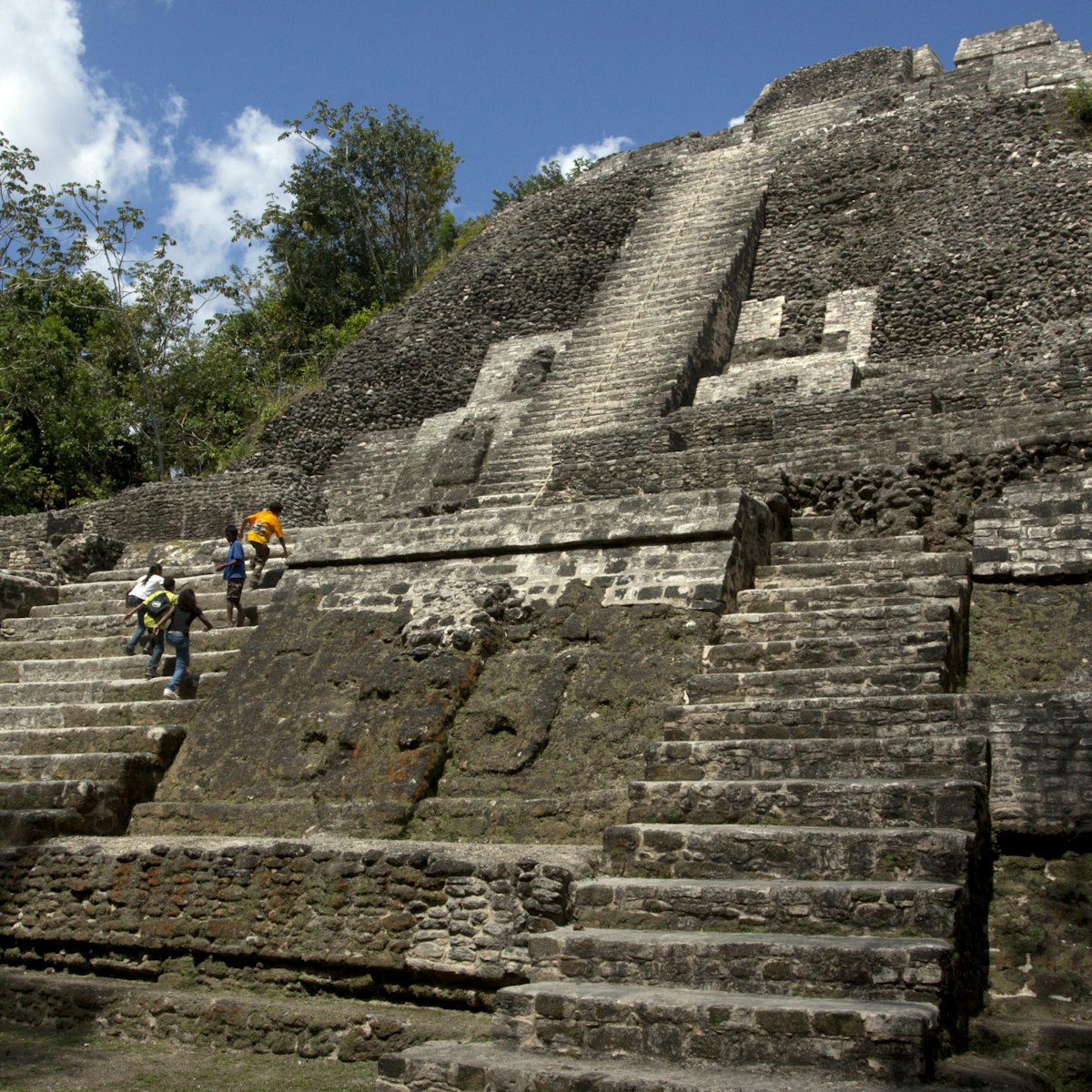Altun Ha, the Maya ruins that have inspired Belikin beer labels and Belizean banknotes, stands 31 miles north of Belize City, off the Old Northern Hwy. While smaller and less imposing than some other Maya sites in the country, Altun Ha, with its immaculate central plaza, is still spectacular and well worth the short detour to get here.
The original site covered 1500 acres, but what visitors today see is the central ceremonial precinct of two plazas surrounded by temples.
The ruins were originally excavated in the 1960s and now look squeaky clean following a stabilization and conservation program from 2000 to 2004.
Altun Ha was a rich and important Maya trading and agricultural town with a population of 8000 to 10,000. It existed by at least 200 BC, perhaps even several centuries earlier, and flourished until the mysterious collapse of Classic Maya civilization around AD 900. Most of the temples date from around AD 550 to 650, though, like many Maya temples, most of them are composed of several layers, having been built over periodically in a series of renewals.
In Plaza A, structure A-1 is sometimes called the Temple of the Green Tomb. Deep within it was discovered the tomb of a priest-king dating from around AD 600. Tropical humidity had destroyed the garments of the king and the paper of the Maya 'painted book' buried with him, but many riches were intact: shell necklaces, pottery, pearls, stingray spines used in bloodletting rites, ceremonial flints and the nearly 300 jade objects (mostly small beads and pendants) that gave rise to the name Green Tomb.
The largest and most important temple is the Temple of the Masonry Altars (B-4) also known as the Temple of the Sun God. The restored structure you see dates from the first half of the 7th century AD and takes its name from altars on which copal was burned and beautifully carved jade pieces were smashed in sacrifice. This is the Maya temple that's likely to become most familiar during your Belizean travels, since it's the one depicted (in somewhat stylized form) on Belikin beer labels.
Excavation of the structure in 1968 revealed several priestly tombs. Most had been destroyed or desecrated, but one, tomb B-4/7 (inside the stone structure protruding from the upper steps of the broad central staircase), contained the remains of an elderly personage accompanied by numerous jade objects, including a unique 6in-tall carved head of Kinich Ahau, the Maya sun god – the largest well-carved jade object ever recovered from a Maya archaeological site. An illustration of the carving appears on the top-left corner of Belizean banknotes.
A path heading south from structure B-6 leads 600yd through the jungle to a broad pond that was the main reservoir of the ancient town.
At the entrance to the site there is a small museum featuring informative displays covering the history of Altun Ha and a full-scale model of the Kinich Ahau carving.
You can find licensed guides (BZ$20 per visitor) outside the museum building. While you don't need a guide to find your way around the site, their services are recommended as they can show you details you might otherwise miss.
Modern toilets, and drinks and souvenir stands are found near the ticket office, and the site has good wheelchair access.






